The number of coats of paint impacts the durability of the paint and the cost of the painting job. Therefore, you may wonder how to tell if a painter applied two coats of paint to your home or a house you are considering purchasing. In this post, we scoured the internet to provide an up-to-date list of ways to understand paint coat count.
If you want to tell the number of coats of paint applied by a painter, consider the following options:
- Visual Appearance of Paint Job
- Time It Took for Painters to Complete Job
- Amount of Paint Used
- Reputation of Painter
- Paint Thickness
To learn more about the above bullet points, read the rest of this article. After reading, you should be well armed with both quick and more technical ways to understand the number of coats of paint applied by your painter.
We conclude by answering several related questions and offering an additional reading list.
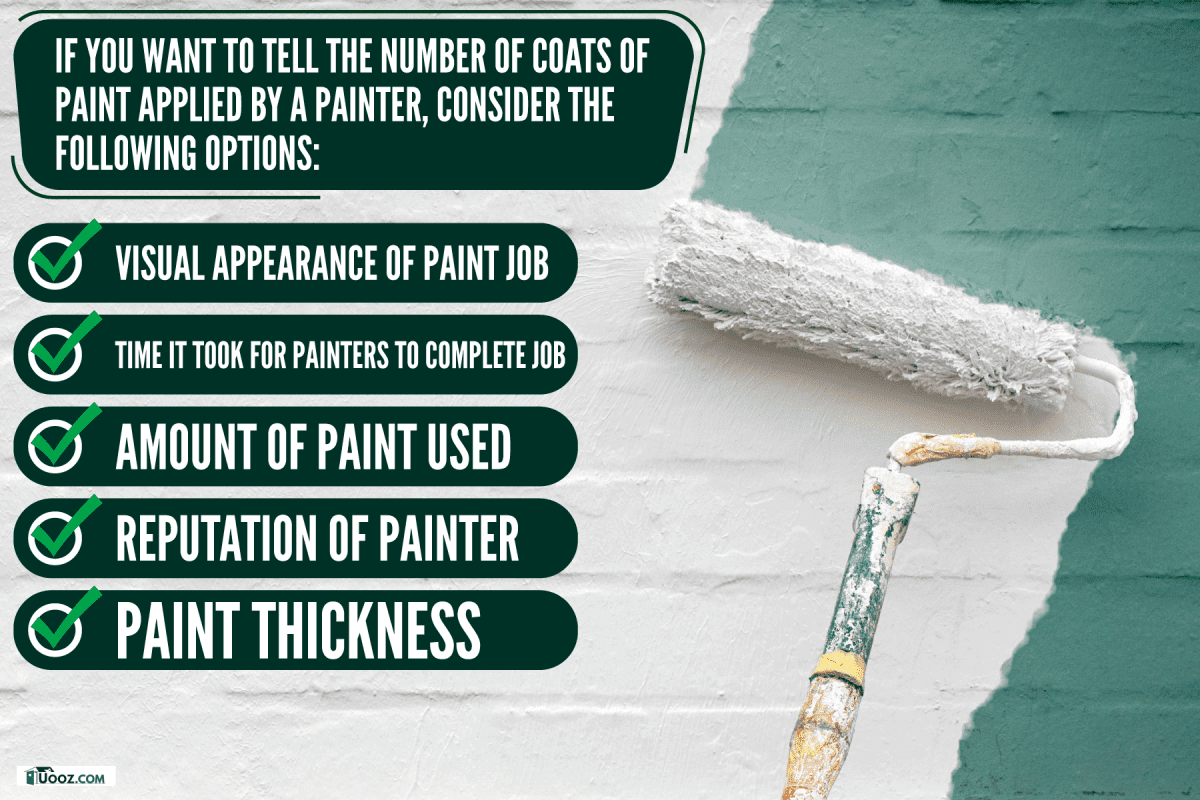
How To Tell If Painter Did Two Coats
Unfortunately, it is generally difficult to tell right away whether a painter did two coats or not. Two coats and one coat of paint are sometimes indistinguishable when the paint is still fresh. Then, after time and weather, the difference becomes much more glaring.
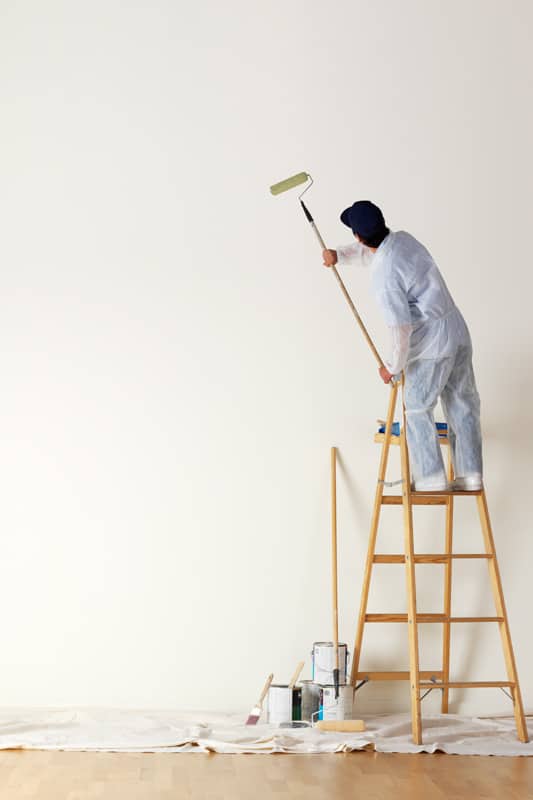
The real problem is trusting a painting contractor you just met and are unlikely ever to see again. To further complicate the matter, the internet is replete with stories of homeowners getting ripped off by painters who only applied one coat but charged for two.
Therefore, it is important to be able to independently verify whether your painter applied one or two coats of paint to your home.
Visual Appearance of Paint Job
If you are concerned about whether or not there are two coats of paint, you should first visually and thoroughly inspect the paint job. With only one coat of paint, it is much more likely that you will be able to spot imperfections if you look closely.
During this inspection, keep your eyes peeled for areas where the old paint color, raw wood, or drywall are visible. This is usually a dead giveaway that your painter only applied one coat.
Further, if they still are sticking to their story, imperfections are an excellent way to be able to bring them back to finish the job anyways.
Spend special attention to hard-to-reach places and heavily featured areas [such as trim and doorways], as these features are the most likely to be missed.
As mentioned above, even if the paint job passes a visual inspection, it still may be the case that only one coat of paint was applied.
Time It Took for Painters to Complete Job
If you can, take note of how long your painters take to complete your job. Most water-based paints require 3 to 4 hours to dry before they are ready for a recoat. Oil-based paints generally require 24 hours. With either paint type, it is very difficult for a painting crew to finish an entire job in one day.

For example, if you notice the painter finishing the final area late in a day without returning, you can be sure that they did not wait the proper amount of time to apply the second coat. This means that only one coat was likely applied to the entire job.
Alternatively, if you notice that the job is completely painted, but the painters come back for a second go, you can be sure that two coats are painted.
If you are suspicious that a painter did not finish the job as bid, take thorough notes of what you see, including times and dates.
These notes may become very handy if you need to bring the issue up to the better business bureau or other agents of authority.
Amount of Paint Used
Each coat of paint uses a certain amount of paint. Therefore, you can determine how many coats were applied by the amount of paint used.
To front load this process, it is smart to ask your painter where they will be buying the paint before you hire them - this allows you to make some calls if the painter is not cooperating. Alternatively, you can monitor the leftover paint containers during the painting and clean-up process.
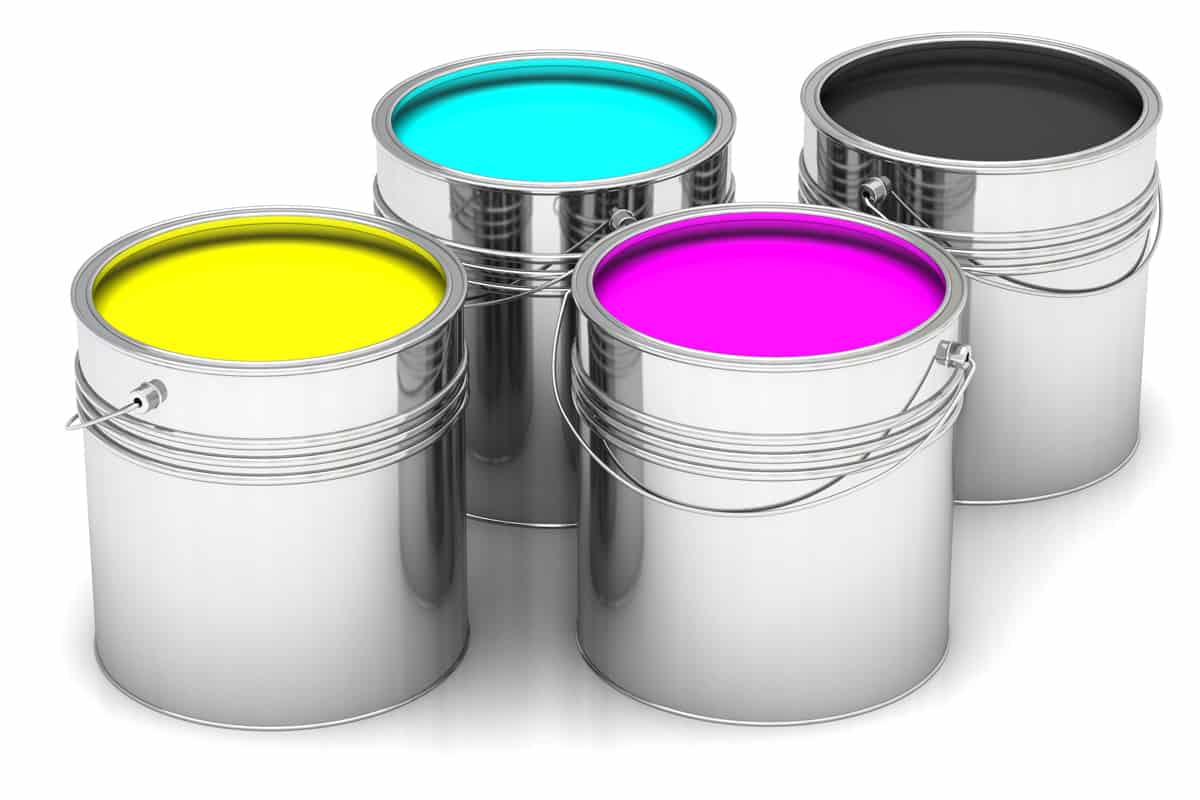
As another option, and if you do not trust your painter, consider insisting that you buy and dispose of the paint containers for the project. This way, you can be more sure of how much paint was used.
One gallon of paint generally covers about 400 square feet. This simple information calculates how much paint is required for a first and a second coat. Take note; the second coat usually does take a little less paint than the first coat.
Finally, different paints have different suggested coating thicknesses. Thus, if you want to get accurate information on the number of gallons of paint required for your exact paint job, take the time to call the paint manufacturer or a local paint store.
Reputation of Painter
If you cannot monitor the painting process or if the painting looks good, you may have to rely on the reputation and word of your painter to determine the number of coats.
While this is difficult to understand objectively, ask around with other local contractors, local paint stores, and the Better Business Bureau.
![]()
If you can be involved in the hiring process, the cheapest bid is usually not from the most trustworthy painter. A cheap bid may only be possible because they plan to skimp on the second coat.
If you find that your painter has a good reputation, they are likely telling you the truth about the number of coats of paint applied. However, if you are still suspicious, consider the final and more trustworthy method described below.
Paint Thickness
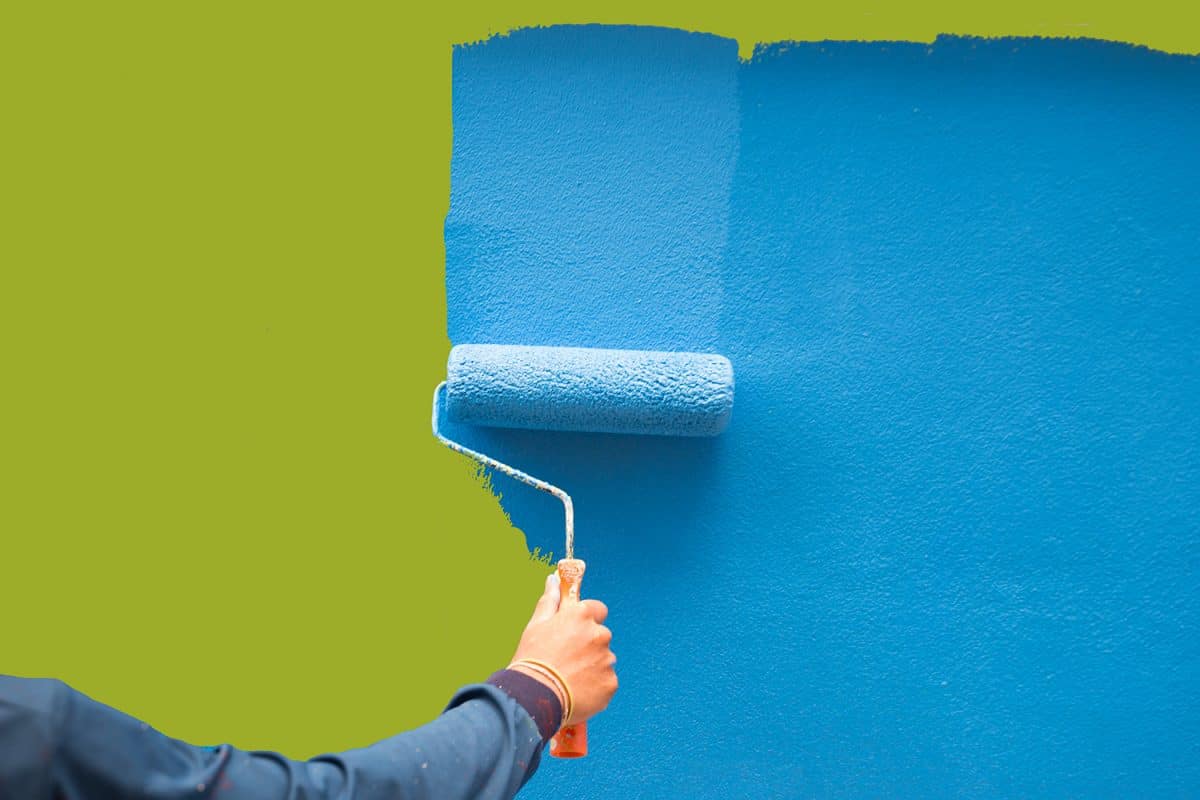
Most paint manufacturers recommend a certain paint thickness for best adherence and longevity. Generally, this is best applied in two coats for a better appearance and curing of the final product.
Therefore, if you can understand the paint thickness applied by your painter, you can also generally understand whether two or one coat of paint has been applied.
According to Carbit, a liquid coating solutions company, this determination is difficult because paint in the US is measured by the mil [one mil equals 1 /1000th of an inch]. This small unit is impossible to gauge by eye or conventional household means.
Thus, to dig down into the thickness and coat count of a paint job - you are best to call a professional [such as another painting company] who can perform this measurement. Consider contacting local paint stores to find a professional to do this service in your area.
Click here to see an ultrasonic paint thickness tester for non-metallic surfaces on Amazon.
According to Defelsko, a paint inspection tool company, these professionals will use a very expensive ultrasonic paint thickness gauge or a specialized microscopic measurement technique.
High-end paint thickness gauges can even be used to determine whether one or two coats of paint were applied.
More affordable paint thickness gauges are available online, but these are only appropriate for metallic surfaces such as automobiles.
Additional Questions
Here, we answer a few questions related to the topic of this post.
Should you always do two coats of paint?
In almost all cases, applying two coats of paint will produce a better final product than applying only one coat. This is especially true for outdoor applications. However, if you are repainting an indoor surface with the same color that was already applied, one coat of paint may be appropriate.
Does paint get darker with the second coat?
No, paint will not get darker with a second coat. The color and hue of paint stay the same no matter how many coats of paint are applied. However, if you are covering an old darker color of paint, a second coat will help the new color of paint appear more true.
What happens if you paint a second coat too soon?
If you apply a second coat of paint too soon, you will end up with a final product that does not look as good or last as long. This is because the second coat traps the first coat in and messes with the drying process. This means that the two coats may not adhere together properly and may cause the first layer to adhere to the surface improperly.
Applying a second coat too soon may lead to issues such as dripping, peeling, bubbling, and early fading.
Are three coats of paint too much?
No! If applied properly with adequate wait times between coats, additional coats of paint just mean a better-looking, more long-lasting final product.
Additional Reading
To learn more about home painting, read these great Uooz articles:
- How To Pour Paint Out Of A 5 Gallon Bucket
- Can You Wait Too Long Between Coats of Paint?
- Should You Paint Trim Before Installing Or After?
In Closing
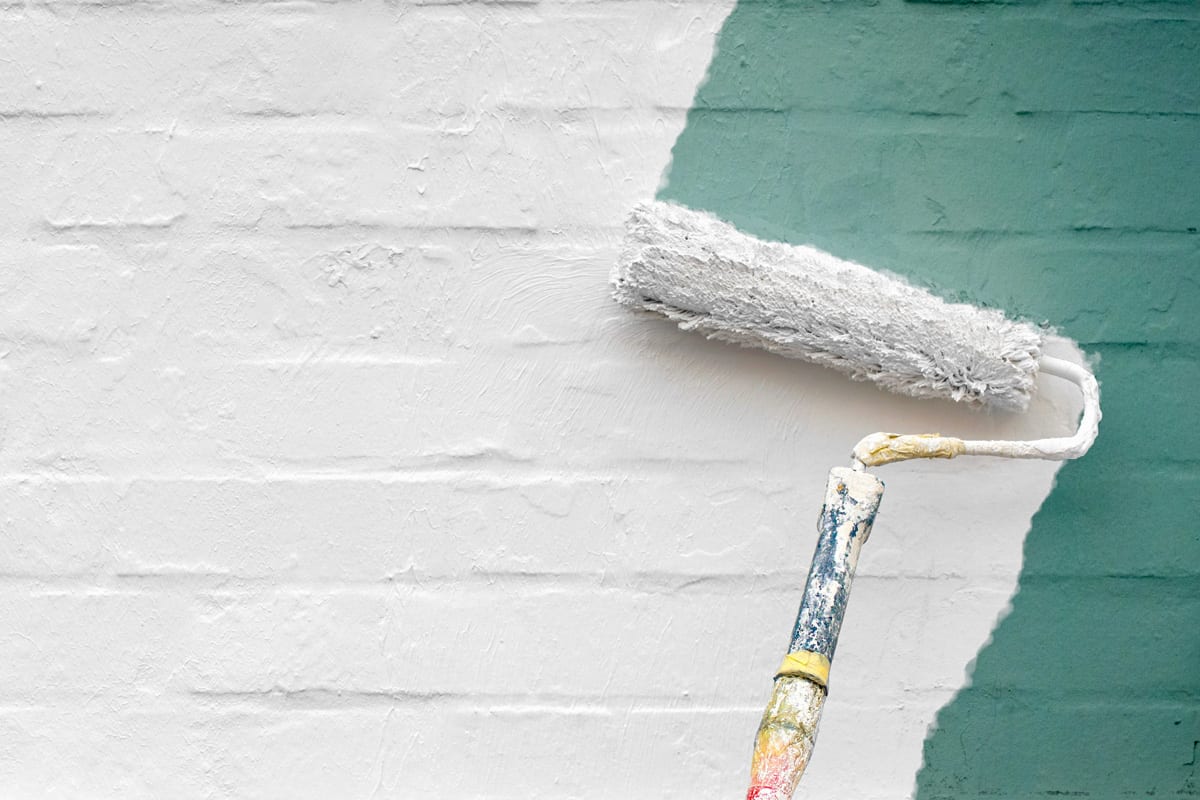
In this post, we answered how to tell how many coats of paint a painter applied. We include a rundown on five different ways to make this determination. To conclude, we answer a few related questions and provide a useful additional reading list. Good luck!

